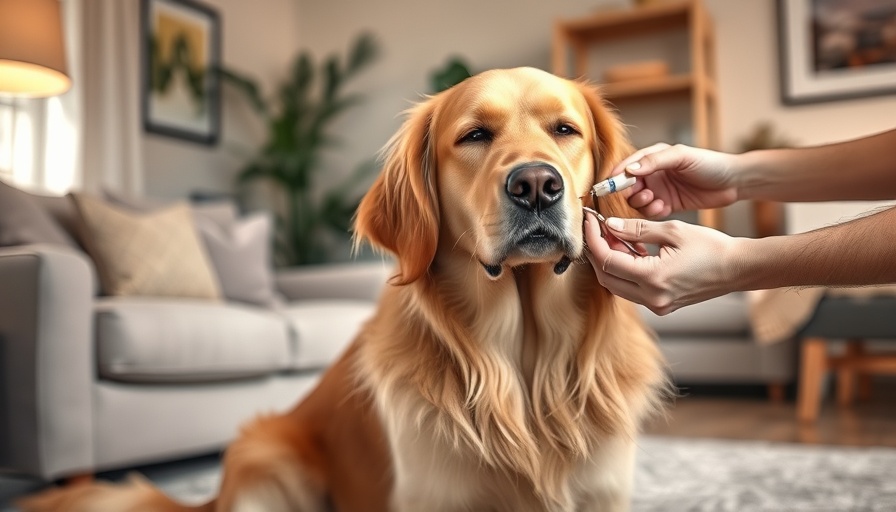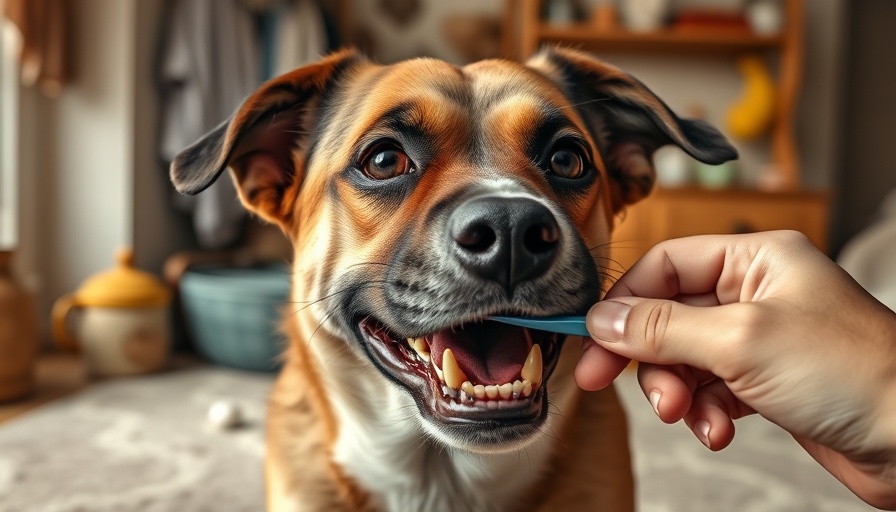
Understanding Sileo: A Breakthrough in Dog Anxiety Management
As pet parents, we all want our dogs to be happy and healthy. However, anxiety can often overshadow their well-being, especially during stressful episodes like thunderstorms or fireworks. Enter Sileo, a groundbreaking treatment designed to help manage canine anxiety by providing fast-acting relief.
What is Sileo and How Does It Work?
Sileo is a prescription medication that contains dexmedetomidine oromucosal film, specifically formulated for dogs experiencing noise aversion—a common condition that affects many dogs during high-stress situations. Available in a handy film format, Sileo allows for easy administration, adhering to the dog’s gums for rapid absorption into the bloodstream. It approves a fast response within a short period, making it a go-to option during anxiety-triggering events.
The Science Behind Sileo: Why It Matters
So, why is Sileo so effective? Research has shown that dexmedetomidine acts as a sedative without causing complete sedation. This means that while your furry friend calms down, they can still respond to their environment. According to veterinary experts, this balance is essential for dogs that may need to stay alert while feeling relaxed, making it an ideal solution for events that are all too common in many households.
Future Trends in Dog Anxiety Treatments
As the understanding of canine behavior and anxiety grows, the landscape of treatment options is evolving. With innovations like Sileo paving the way, more pet owners are gaining hope. Future therapies may incorporate holistic approaches, combining medication with behavioral training and environmental adjustments to create a comprehensive plan for managing anxiety.
Considering Sileo for Your Dog: What to Expect
Before starting Sileo, consult with your veterinarian to discuss your dog’s specific needs. Depending on your pet’s health history and anxiety severity, your vet will provide tailored advice on dosage and administration. It's essential to monitor your dog’s response to the drug, making note of any side effects or changes in behavior. Over time, you may discover a significant improvement in their anxiety levels, allowing for a more joyful, relaxed lifestyle.
Real-Life Experiences: Success Stories from Pet Owners
Numerous pet parents have shared their success stories with Sileo, highlighting its positive impact on their dogs. One owner recounts how her dog, traditionally nervous during storms, finally settled down after receiving Sileo before an anticipated thunderstorm. Another shares that their dog, who used to hide during firework displays, has now been able to enjoy family gatherings with less stress.
Counterarguments: Understanding Different Perspectives
While many praise Sileo's effectiveness, some pet owners remain cautious about relying on medication. They advocate for behavior modification techniques and natural remedies as potential alternatives to pharmaceuticals. This debate emphasizes the importance of a multi-faceted approach to dog anxiety—consulting with vets, exploring various options, and prioritizing your dog’s unique needs.
Essential Tips for Reducing Dog Anxiety
In addition to medication, there are several holistic strategies owners can implement to help reduce their dog’s anxiety. Creating a safe space, maintaining consistency in routines, and using positive reinforcement training are all effective ways to build a supportive environment for anxious dogs. Try to identify what specifically triggers your pet's anxiety and work collaboratively with your vet to come up with practical solutions.
Conclusion: Empowering Yourself as a Pet Parent
Knowing about effective treatments like Sileo can empower you to take proactive steps for your dog's mental health. By utilizing all available resources, including medication and behavioral practices, you can create an atmosphere where your dog feels safe and secure. Embrace the journey toward a calmer and more relaxed life for your furry friend, and remember that help is available.
 Add Row
Add Row  Add
Add 




Write A Comment